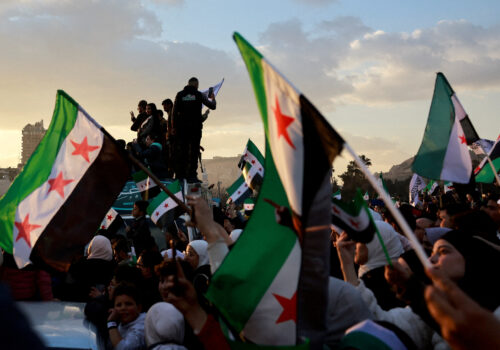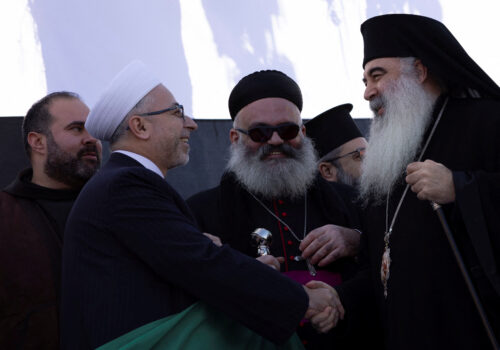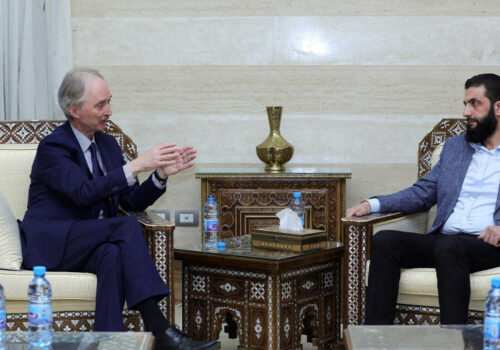Dispatch from Damascus: The challenges of rebuilding are becoming clearer in Syria
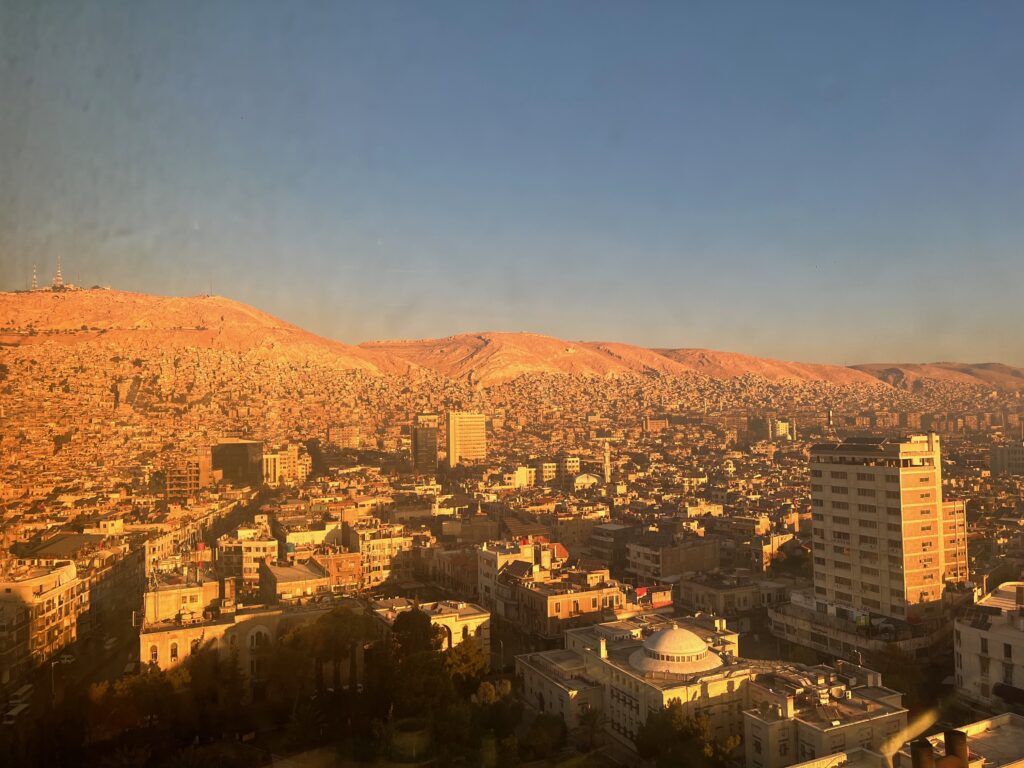
DAMASCUS—Over a half-century of Assad regime rule, including fourteen years of a brutal civil war, had turned Syria into a state of mass oppression as well as a geopolitical black hole. In December, a startling advance by an umbrella of armed opposition groups, led by Hayat Tahrir al-Sham (HTS), led to an unprecedented takeover and a rapid transition in governance. Just a month ago, I (and the millions of Syrians both inside and outside of the country) would not have imagined this day would come. Now that it has, the challenges and opportunities of rebuilding Syria—a free, secure, inclusive, and prosperous Syria—are becoming clearer.
I am in Syria for the first time in nearly fifteen years. While visiting Damascus, Homs, and Hama days after the collapse of the Assad regime and the initial period of joy and uncertainty that followed, I saw Syrians slowly returning to business as usual. In Damascus (considered the world’s oldest inhabited capital city) policemen in orange vests whistled and directed the congested traffic, vendors reopened their shops, and students boarded school buses ahead of the holiday. Young children wove between cars selling revolutionary flags—the new Syrian flag, which features a green band along the top. License plates from Idlib, Aleppo, and Daraa suggested that many of these cars belonged to displaced individuals who were either returning to their homes or coming back to Damascus for the first time in years.
There were notable differences between this visit and my last. For one, across the city, posters depicting former Syrian dictator Bashar al-Assad’s face had been torn by jubilant civilians. Another was that the tarnished statue of Bashar’s father and predecessor Hafez al-Assad, which once stood dauntingly outside of the al-Assad Library, had been toppled and was lying in front of the Damascene Sword monument across the street. Syrians stomped on it, celebrating their freedom from fifty-four years of tyranny. These symbols of state repression aside, the indication of Syrians’ newfound liberties that stood out the most was their speaking and assembling freely without the fear of being thrown into one of the regime’s prisons or being bombed by a Russian jet.
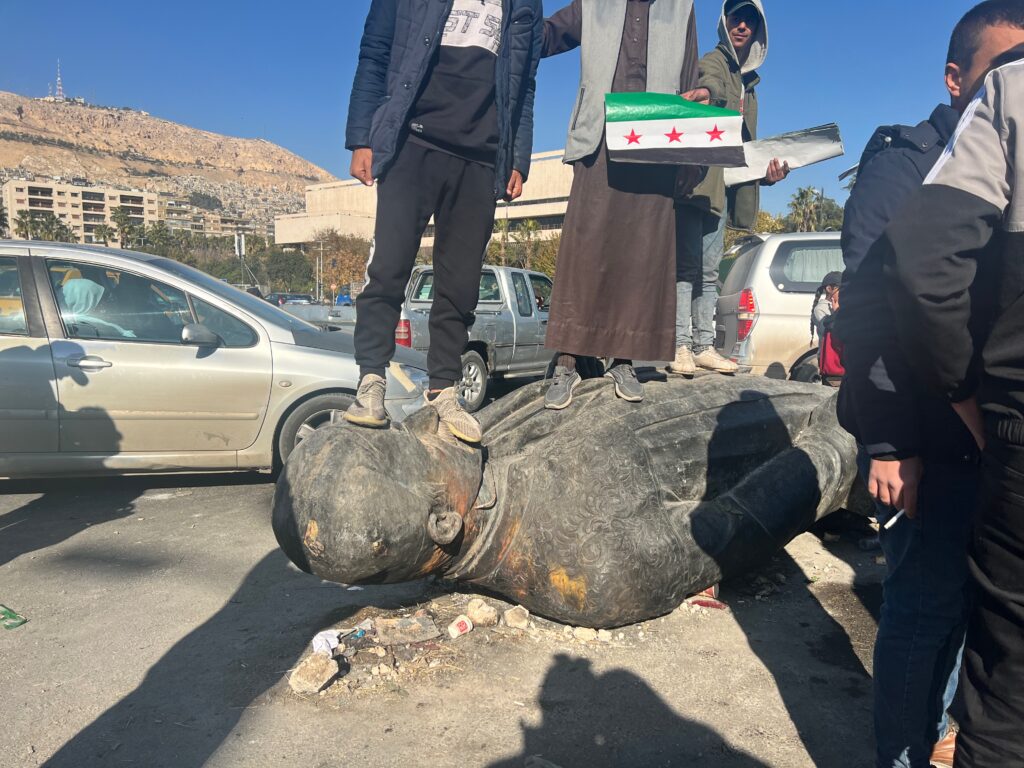
SIGN UP FOR THIS WEEK IN THE MIDEAST NEWSLETTER
The Syrian civil war was the deadliest and most devastating conflict of the 2010s, with profound consequences for human security, regional security, and global politics. The toll on civilian lives, infrastructure, and the economy was staggering, and its ripple effects were felt across the globe. Over half of the country’s population—fourteen million people—had been displaced at least once, and over five million Syrian refugees fled to neighboring countries. During the global migrant crisis of the 2010s, over a quarter of the world’s refugees were Syrians. Migration proved a lightning-rod issue warping politics from Ankara to Berlin to London to Washington. The ramifications of a free and stable Syria are huge for vulnerable populations as well as the countries that host them. Discussions about repatriation are already underway, for example in European countries. However, these conversations are concerningly premature: Syria is not yet prepared to receive and integrate returnees, as significant humanitarian, economic, and political-military challenges must be addressed.
Since the start of the conflict in 2011, Syria’s economy has contracted by a staggering 85 percent. The estimated cost of rebuilding the country ranges between $250 billion and $400 billion—figures that, given the extensive damage to the country’s infrastructure, appear increasingly accurate. For those returning, one of the most striking changes is the visible level of poverty that greets them within minutes of entering the city center. The toll on society is undeniable: Buildings, both public and residential, are unusable, dirty, and neglected, and streets and storefronts are damaged and in disarray. The road between Homs and Hama, normally a leisurely thirty-minute drive, took longer to navigate as it was littered with debris and had been subject to destruction by bombardment from the Syrian regime, Russia, and Iran-backed militias. But the visible destruction hardly captures the societal scars left behind.
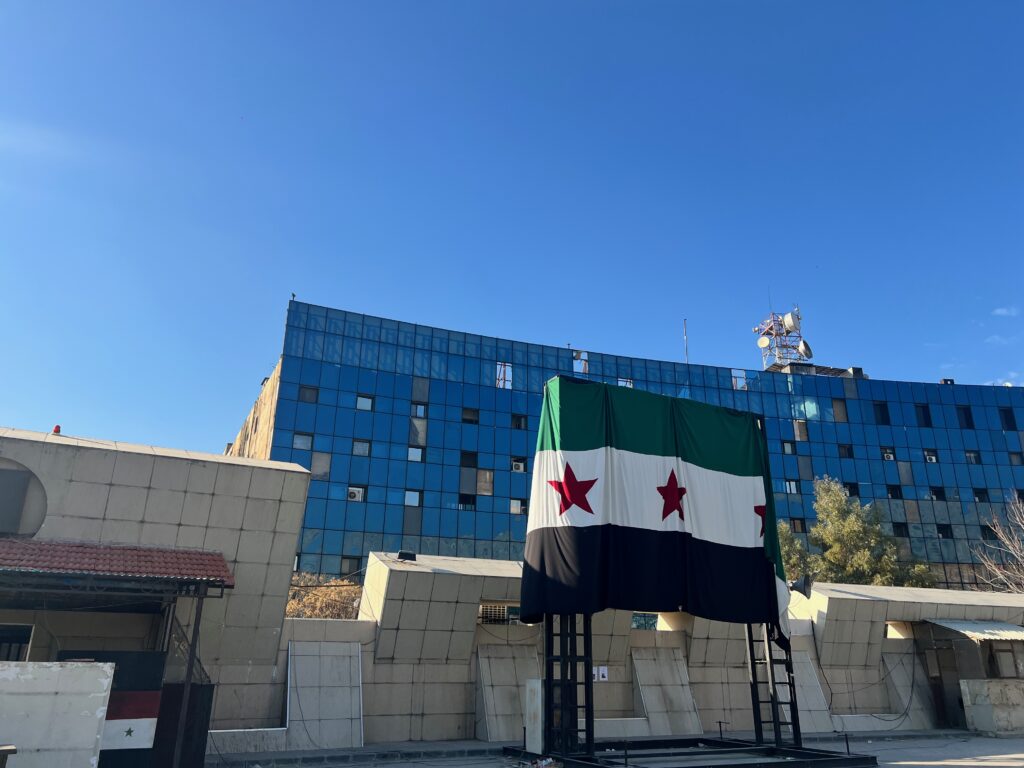
“We are waking up from a long nightmare,” someone in Damascus told me. Others described it as “living in a dream” and said that many are in “denial” of this new reality. It became clear that the trauma of authoritarianism, for societies held in an iron fist like in Syria, is intergenerational. And it will likely take generations to heal.
This was apparent in the days following the collapse of the Syrian regime, which led to the freeing of thousands of prisoners—men, women, and children— from Assad’s prisons. Their release shed new light on the decades of crimes committed by both Assads—Hafez and Bashar—and a harsh reminder for regional and international parties who sought to normalize with the regime. Syrians were confronted with a painful reality that they had long known but had been forced into staying silent about for generations. Families today are still searching the Syrian regime’s notorious prisons and mass graveyards for loved ones forcibly detained or disappeared.
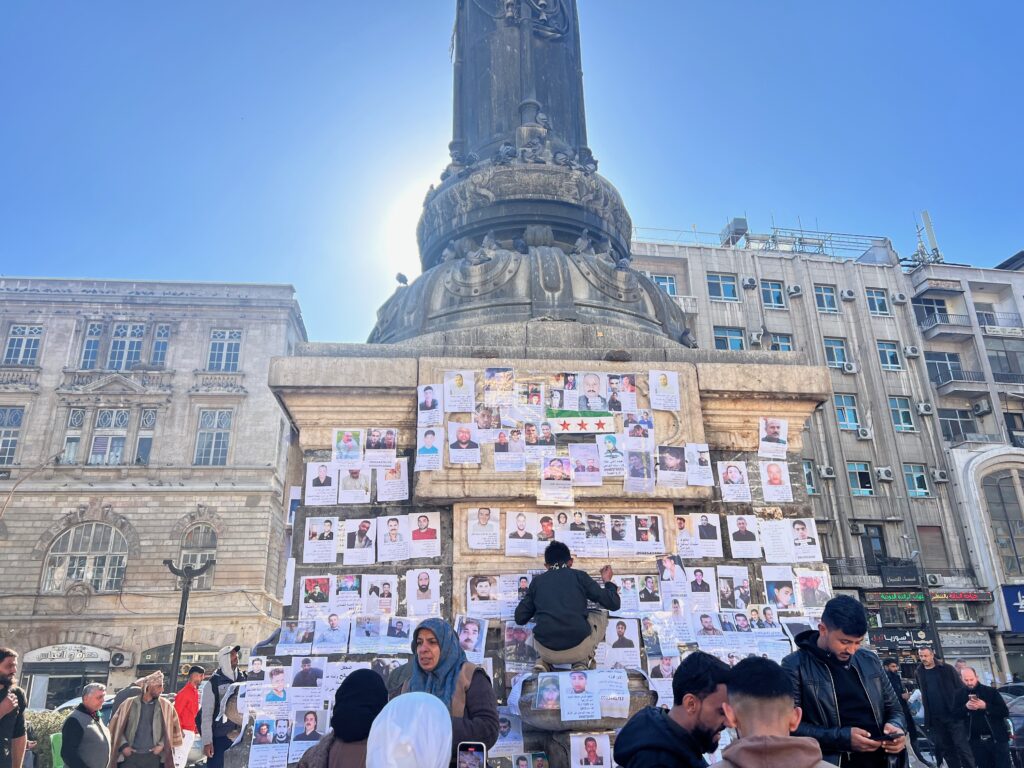
In Damascus’s Martyr’s Square, I met with families hanging photographs of their missing loved ones, many of whom had been taken as prisoners as early as 2012. I spoke to two mothers: one who had identified her son in an online video released after the liberation and was still trying to find him. Another mother had heard her son, missing since 2014, had been spotted near their old home by a neighbor. “I will wait for him at the Umayyad Mosque, maybe he will turn up there,” she said, with a glimmer of hope in her eyes.
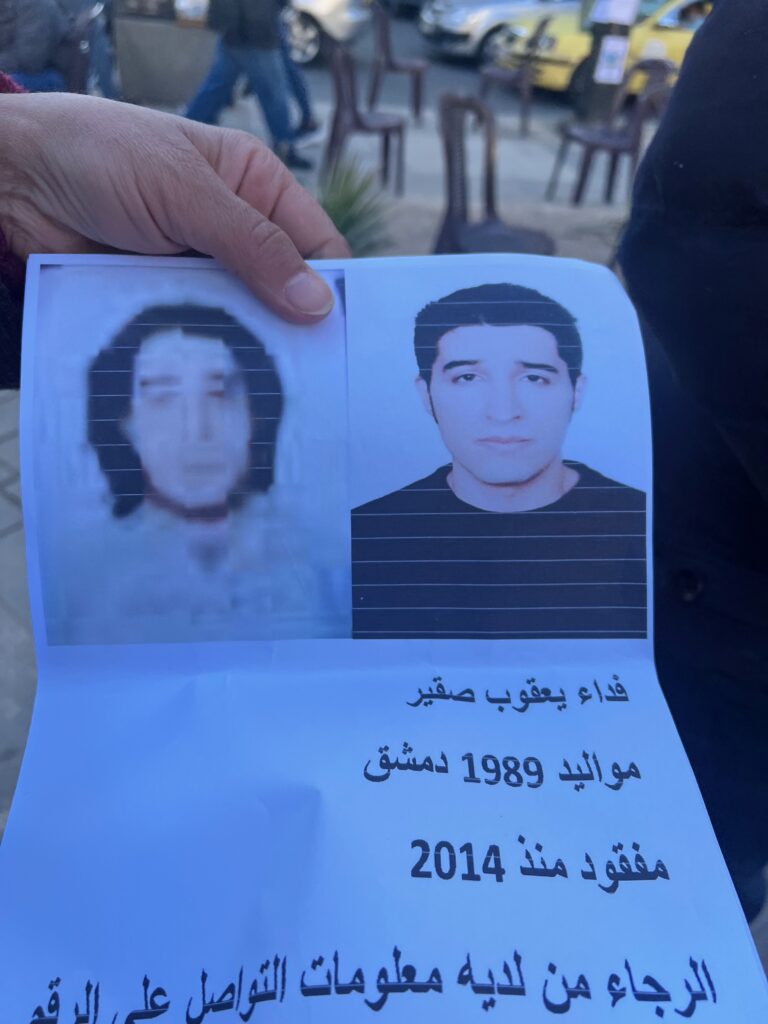
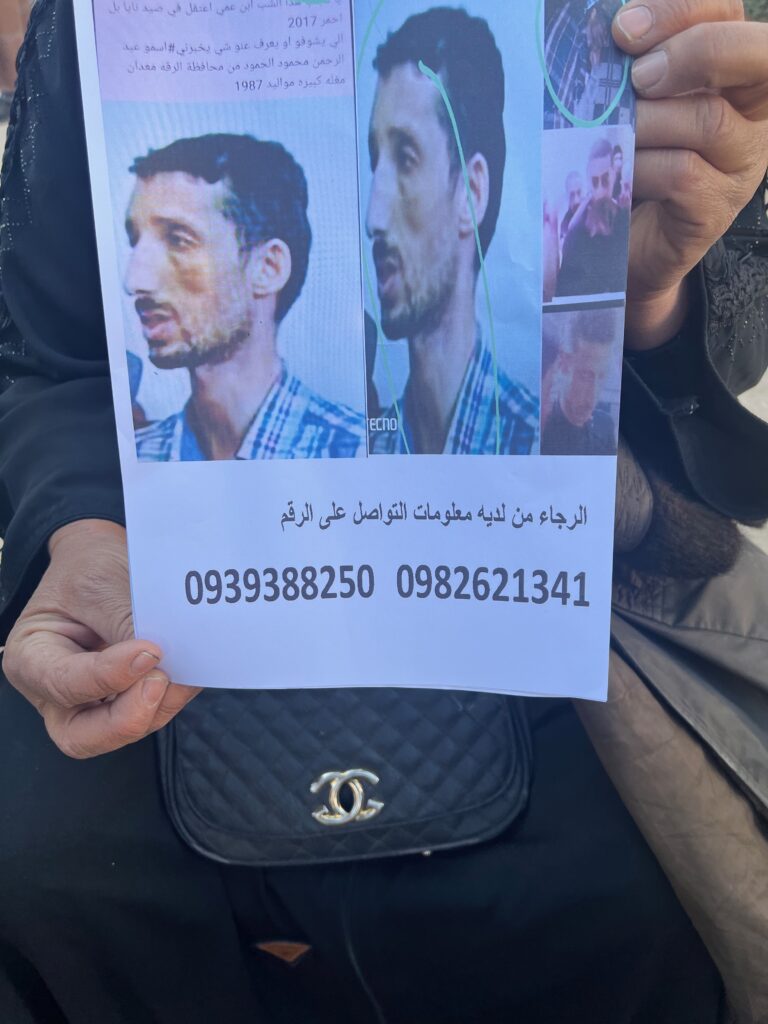
I also met with civil society groups, who highlighted that the greatest challenge continues to be providing support to the 70 percent of Syrians living in poverty and the one in four Syrians experiencing extreme poverty. Earlier this year, the United Nations reported that over 16.7 million Syrians—around 79 percent of the population—are in urgent need of humanitarian assistance.
Syrians know they will not get what they need to rebuild as a society, stabilize their economy, and set up government services and a social safety net with one hand tied behind their backs. Nearly every conversation I had with civil society groups touched upon the need for global sanctions relief, with people expressing hope that sanctions would soon be eased to facilitate the flow of money from abroad, enable the delivery of remittances from the diaspora, and streamline licensing processes to allow nongovernmental organizations to operate more effectively and provide much-needed humanitarian aid. In the West, policymakers and humanitarian organizations have begun to reexamine such sanctions, seeing as they could stunt Syria’s recovery.
The Syrian interim authorities’ success is contingent on buy-in from the Syrian people, as international security expert Sana Sekkarie wrote for the Atlantic Council in her recent analysis. Addressing the current economic crisis and guaranteeing that basic needs are met, including access to food, water, electricity, and healthcare, will be critical to political stability. Without fundamental needs and services being met, public trust and stability will remain elusive, further complicating efforts to foster sustainable peace and democratic governance.
A multifaceted crisis such as the one in Syria demands innovative and swiftly implemented solutions. Among many priorities, it is crucial for the new governing party or leadership to focus on rebuilding trust and legitimacy. And while Syrians are ready to take ownership of their country, this society—plagued by half a century of tyranny—will need to unlearn its fear of the state. Syrians will also need to deliberately work together, for the first time, across minority groups and sects. These are the first of many steps toward building a free, stable, and prosperous Syria that can serve as an inspiration for other countries impacted by conflict across the world.
Diana Rayes is a nonresident fellow for the Syria Project in the Atlantic Council’s Middle East Programs. She is the chairwoman of the Syria Public Health Network.
Further reading
Sat, Dec 21, 2024
A US blueprint for Syria’s fragile transition
MENASource By
As long as HTS is willing to evolve and accept constructive criticism, the US should engage with the group. Ignoring Syria’s new leaders will not make them go away.
Fri, Dec 20, 2024
What will minority and women’s rights look like in the new Syria?
MENASource By Sinan Hatahet
After years of conflict and division, there is an opportunity to build a more inclusive and just future that reflects the resilience, diversity, and aspirations of all Syrians.
Wed, Dec 18, 2024
The fall of the Assad regime is just the beginning of Syria’s quest for stability
MENASource By
Sectarian divisions and external actors threaten to render the fall of the Assad regime a new phase in Syria’s civil war rather than its conclusion.
Image: Damascus University students stand on the toppled statue of the late Syria's President Hafez al-Assad, father of Bashar al-Assad, after Syria's Bashar al-Assad was ousted, in Damascus, Syria, December 15, 2024. REUTERS/Ammar Awad TPX IMAGES OF THE DAY
